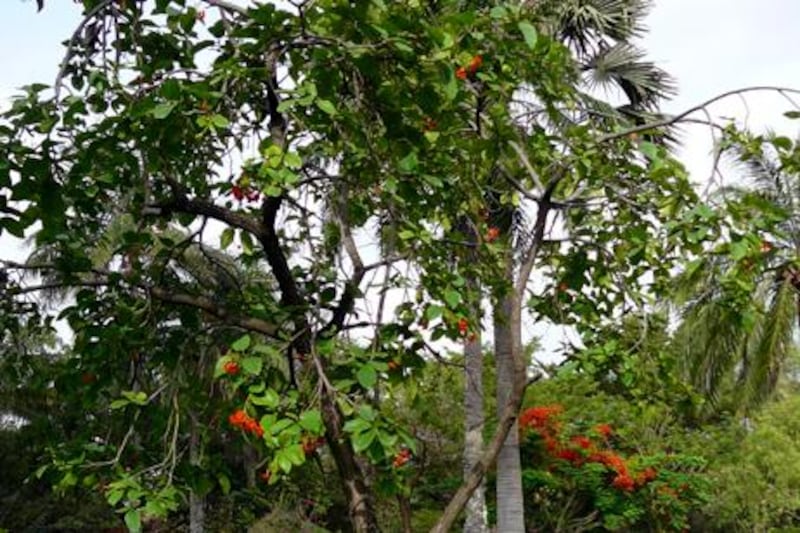The main reason for this tropical evergreen's popularity as an ornamental street and garden tree is its large, brilliant orange flowers.
Not for the faint-hearted, they are arguably the most eye-catching blooms to be found on any of the more commonly used plants found in the UAE and are accompanied by white fruit. Both contrast with the plant's large, stiff, heart-shaped, dark green leaves, which have a tendency to attract dust and drop throughout the year.
_____________________
More
• Keep the desert blooming for years to come with native plants
_____________________
The tree is named after John H Geiger, a 19th-century sea captain and wrecker from Key West, Florida. The naturalist, ornithologist and painter John James Audubon saw the trees in Geiger's garden in 1832 and used them as the background to a painting in his Birds of America series.
If staked when young and pruned regularly, Cordia will form a neat standard tree reaching anywhere between three and five metres. However, it will also form an attractive multi-stem, particularly in a garden setting, and it can also be grown in a container. All parts of the plant are used in folk medicine and in its native Caribbean, syrup made from the bark, flowers or fruit is taken for coughs and bronchial ailments. Cordia is best propagated from seed.





